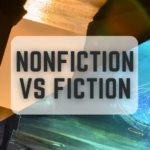Introduction to Digital Libraries
In today’s digital age, the concept of libraries has evolved beyond physical buildings stocked with books. Digital libraries have emerged as virtual repositories of knowledge, offering a vast array of resources accessible online. These digital platforms have revolutionized the way people access, read, and interact with literature.
Evolution of Digital Libraries
Early Beginnings
“Early Beginnings” marks the foundational stages in the evolution of digital libraries, a journey intertwined with the rapid advancement of technology. Initially, digital libraries emerged as experimental projects in the late 20th century, seeking to digitize and organize vast repositories of information in digital formats.
These early initiatives aimed to enhance accessibility and preserve valuable cultural and scholarly resources. Pioneering efforts such as Project Gutenberg, launched in 1971, laid the groundwork for future digital library developments by digitizing public domain works and making them freely available online.
As technology progressed, so did the scope and capabilities of digital libraries, paving the way for transformative innovations in information management, retrieval, and dissemination. These humble beginnings laid the groundwork for the expansive digital libraries we rely on today, shaping the landscape of knowledge dissemination and accessibility in the digital age.
You may also like: Top 10 Best Biographies of All Time
Technological Advancements
The Evolution of Digital Libraries has been profoundly shaped by technological advancements, ushering in an era of unprecedented accessibility and knowledge dissemination. From the early days of digitization efforts to the current era of sophisticated algorithms and machine learning, technology has revolutionized how information is stored, organized, and accessed.
Digital libraries have evolved from simple repositories of digitized texts to dynamic platforms offering multimedia content, interactive features, and personalized recommendations.
The advent of cloud computing, big data analytics, and artificial intelligence has further enhanced the capabilities of digital libraries, enabling users to explore vast collections with ease and uncover insights previously hidden within the data. As technology continues to advance, the evolution of digital libraries will undoubtedly accelerate, promising even greater accessibility, interactivity, and innovation in the dissemination of knowledge.
Benefits of Digital Libraries
Digital libraries offer numerous benefits compared to traditional libraries:
Accessibility
Digital libraries are changing the way people interact with information by providing unmatched accessibility. These libraries dismantle geographical barriers by digitizing enormous resource collections, making content accessible to users anywhere in the world. Furthermore, they improve accessibility for people with impairments by providing features like braille and audio alternate formats, font sizes that may be adjusted, and screen readers.
This inclusiveness guarantees that the wealth of knowledge contained in digital archives is accessible to anyone, irrespective of physical constraints. Additionally, users can pursue study and research at their own pace and leisure thanks to the ease of accessing digital libraries from any internet-enabled device, which promotes a culture of lifelong learning and intellectual inquiry.
Convenience
Convenience stands out as a paramount advantage of digital libraries, revolutionizing the way we access information. With digital libraries, users can conveniently explore vast collections of resources from the comfort of their homes, offices, or even on the go.
Gone are the days of cumbersome searches through physical stacks; now, a simple keyword query yields a plethora of relevant materials within seconds. Whether it’s scholarly articles, e-books, or multimedia content, digital libraries provide instant access to an abundance of knowledge at our fingertips.
Additionally, the flexibility of digital formats allows users to customize their reading experiences, adjusting font sizes, and formats to suit their preferences. This unparalleled convenience not only saves time but also enhances accessibility, making knowledge more attainable for individuals across diverse backgrounds and locations.
Variety of Content
There are many advantages to digital libraries, but one that stands out is the range of content they provide. Digital libraries have the capacity to keep a vast range of items, including multimedia files, e-books, articles, journals, and archive documents, unlike traditional libraries that are constrained by physical space. Because of this diversity, users are guaranteed access to a vast array of information that may be tailored to meet their various hobbies, academic goals, and research requirements.
A wide range of content, including historical records, academic papers, literary masterpieces, and instructional films, can be found in digital libraries, encouraging research and study in a variety of fields. Furthermore, users can study interdisciplinary links and delve into specialized issues because to the accessibility, which encourages intellectual curiosity and broadens knowledge frontiers. Consequently, the wide range of content.
You may also like: International Publishing: Expanding Your Reach Beyond Borders
Challenges Faced by Digital Libraries
Despite their numerous benefits, digital libraries face several challenges:
Copyright Issues
“Copyright Issues” represent one of the most significant challenges faced by digital libraries today. As these libraries strive to make vast amounts of information accessible to users worldwide, they must navigate complex copyright laws and regulations. Balancing the need to provide access to knowledge with respecting intellectual property rights poses a constant dilemma.
Digital libraries often encounter obstacles such as determining the copyright status of materials, securing permissions for digitization and distribution, and addressing issues related to orphan works where the copyright holder is unknown or cannot be located.
Moreover, the evolving nature of digital content complicates matters further, with new forms of creative expression continually emerging. As digital libraries continue to expand their collections and services, finding sustainable solutions to copyright issues remains a pressing concern in the digital age.
Digital Divide
The Digital Divide remains a formidable obstacle in the path towards equitable access to digital resources and information. This phenomenon underscores the disparities in access to technology, internet connectivity, and digital literacy among various demographics and regions.
Digital libraries, despite their potential to democratize knowledge dissemination, grapple with the challenge of reaching marginalized communities who lack the necessary infrastructure or skills to engage with digital resources.
Bridging this divide demands concerted efforts from policymakers, educators, and technology providers to ensure inclusivity and empower all individuals with the tools and knowledge needed to navigate the digital landscape effectively. Addressing the Digital Divide is essential for digital libraries to fulfill their mission of fostering learning, research, and intellectual exploration for all.
Preservation Concerns
Preservation concerns stand at the forefront of challenges faced by digital libraries, posing intricate hurdles in ensuring the longevity and accessibility of digital collections. In an era marked by rapid technological advancement, digital materials are susceptible to various risks such as format obsolescence, hardware and software dependencies, and data degradation.
Addressing these concerns demands proactive strategies encompassing digital preservation best practices, including format migration, emulation, and robust metadata management. Moreover, the dynamic nature of digital content necessitates continuous monitoring and adaptation to emerging preservation standards and technologies.
Collaborative efforts among institutions, policymakers, and information professionals are indispensable in navigating these challenges and safeguarding the invaluable cultural heritage and knowledge encapsulated within digital libraries for generations to come.
You may also like: How to Make Book Design More Appealing to the Reader
Features of Modern Digital Libraries
Search Functionality
One of the pivotal features defining modern digital libraries is their robust search functionality. This capability enables users to swiftly navigate vast repositories of digital resources, including documents, articles, books, and multimedia content. Advanced search algorithms empower users to locate specific information efficiently, employing filters such as keywords, authors, publication dates, and content types.
Additionally, many digital libraries incorporate natural language processing (NLP) techniques, allowing users to pose queries in everyday language rather than relying solely on precise search terms. Through intuitive interfaces and powerful indexing mechanisms, modern digital libraries provide users with seamless access to a wealth of knowledge, enhancing research endeavors and fostering learning across diverse fields.
Customization Options
Modern digital libraries offer an array of customization options, empowering users to tailor their experience according to their preferences and needs. These options often include personalized search filters, allowing users to refine their searches based on parameters such as date, author, subject, and format.
Additionally, users can customize their interface settings, such as adjusting font size, theme, and layout for optimal readability and user experience. Some advanced digital libraries even offer personalized recommendations based on users’ browsing history and preferences, enhancing the discoverability of relevant content.
With customization options, users can tailor their interactions with digital libraries, making the exploration and utilization of resources more efficient and enjoyable.
Interactive Elements
Features of modern digital libraries encompass a spectrum of interactive elements designed to enhance user engagement and facilitate efficient access to information. Interactive elements, pivotal to this digital paradigm, offer users dynamic tools to interact with content.
From intuitive search functionalities that employ predictive algorithms to personalized recommendations tailored to individual preferences, these elements epitomize the fusion of technology and user-centric design. Additionally, collaborative features such as virtual book clubs, discussion forums, and annotation tools foster a sense of community among users, enabling fruitful exchange of ideas and insights.
Furthermore, multimedia integration including audiovisual materials, interactive maps, and virtual tours enrich the learning experience, transcending traditional text-based resources. In essence, interactive elements within modern digital libraries serve as catalysts for exploration, discovery, and knowledge dissemination in the digital age.
You may also like: The Rise of Self-Publishing and What it Means for Authors
The Impact of Digital Libraries on Publishing
Digital libraries have had a profound impact on the publishing industry:
Accessibility to Authors
The Impact of Digital Libraries on Publishing has greatly enhanced accessibility to authors, revolutionizing the landscape of academic and creative work dissemination. With digital libraries, authors now have unprecedented opportunities to reach wider audiences irrespective of geographical barriers.
These libraries offer a platform where authors can publish and disseminate their work swiftly and efficiently, eliminating the constraints of traditional publishing processes. Moreover, digital libraries facilitate easy access to a vast array of resources and literature, empowering authors with valuable research materials to enrich their writing.
Through digital platforms, authors can also engage with their readership directly, fostering a more dynamic and interactive relationship. Overall, the accessibility afforded by digital libraries has democratized the publishing realm, enabling authors from diverse backgrounds to share their voices and contribute to the global discourse.
Global Reach
Global Reach refers to the expansive influence and accessibility of digital libraries, which has significantly impacted the landscape of publishing. Digital libraries have revolutionized the way content is disseminated, breaking down geographical barriers and providing access to a vast array of information to users worldwide.
Through the proliferation of digital platforms, publishers can now reach audiences on a global scale, transcending traditional limitations of print media. This global reach not only expands the potential readership for published works but also fosters cultural exchange and collaboration among diverse communities.
Moreover, digital libraries facilitate the preservation and dissemination of cultural heritage, ensuring that knowledge and literature are accessible to future generations regardless of their geographic location. In essence, the impact of digital libraries on publishing is characterized by the democratization of information and the empowerment of readers and authors across the globe.
Changing Reading Habits
The Impact of Digital Libraries on Publishing has brought about a significant transformation in reading habits worldwide. With the proliferation of digital libraries, readers now have unparalleled access to a vast array of literary works at their fingertips.
This accessibility has revolutionized the way people consume content, fostering a shift towards digital reading formats. E-books, audiobooks, and online articles have become increasingly popular choices, offering convenience and flexibility to readers who can now carry entire libraries in their pockets. Moreover, digital libraries have democratized publishing by providing a platform for independent authors and niche genres to reach a global audience without the constraints of traditional publishing avenues.
As a result, readers are exposed to diverse perspectives and voices, enriching their reading experiences and broadening their literary horizons. However, while digital libraries offer numerous benefits, they also pose challenges such as information overload and concerns about the preservation of traditional reading practices. Nonetheless, the overall impact of digital libraries on publishing has been profound, reshaping reading habits and fostering a new era of literary exploration and engagement.
You may also like: The Importance of Professional Editing in Self-Publishing
Future Trends in Digital Libraries
The future of digital libraries holds exciting possibilities:
Integration of AI and Machine Learning
AI and machine learning technologies will play a significant role in the evolution of digital libraries. These technologies can enhance search capabilities, personalized recommendations, and automate metadata tagging and content analysis.
Virtual Reality Enhancements
Virtual reality (VR) technology has the potential to revolutionize the way users interact with digital libraries. VR environments can create immersive reading experiences, allowing users to explore virtual bookshelves and interact with digital content in three-dimensional space.
Collaborative Platforms
Digital libraries will increasingly serve as collaborative platforms where users can collaborate on projects, share annotations and insights, and engage in scholarly discourse. These collaborative features promote knowledge sharing and collaboration among researchers, educators, and students.
Final thoughts
In conclusion, digital libraries have redefined the concept of reading and access to knowledge in the modern publishing landscape. With their accessibility, convenience, and diverse content offerings, digital libraries empower users to explore the world of literature and scholarship like never before. While facing challenges such as copyright issues and the digital divide, digital libraries continue to evolve with advanced features and technologies, shaping the future of reading and publishing.
You may also like: Guide to Self-Publishing on Amazon Kindle Direct Publishing
















